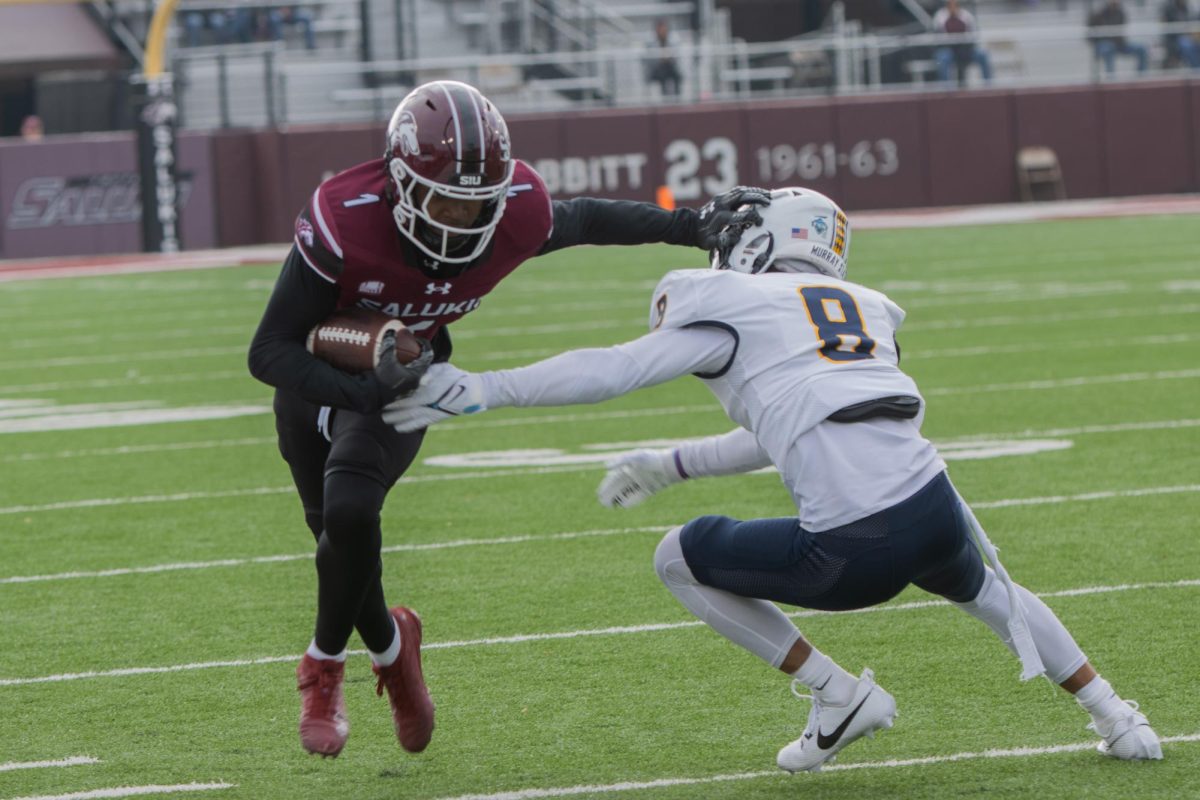Insurance will cover damage to SIUC plane from emergency landing
February 28, 2012
An SIUC aviation student and instructor had to put their training to use when a lodged landing gear forced them to make an emergency landing last Monday.
David NewMyer, chairman of the ASA Aviation Management and Flight, said the flight instructor and student handled the situation wonderfully. He said the instructor took control of the flight and the student went through the plane’s manual and cited the checklist for the proper landing to the instructor. Both walked away from the incident unharmed.
According to WSIL, the school has seen about four emergency landings in the last 10 years.
Advertisement
The airplane, a Cessna 182RG, had a faulty landing gear.
John Voges, chief flight instructor, said the landing gear uses an electric motor that energizes a power pack to push hydraulic fluid. The landing gear swings back and forth on a pivot assembly, but in this case, the gear got stuck at about a 45-degree angle, he said.
NewMyer said the student and instructor, Brian Dierks, were flying over Pinckneyville in a practice area when Dierks first noticed the problem.
“They weren’t doing anything with the landing gear, but the instructor noticed the landing gear made a funny noise and they hadn’t even touched it,” NewMyer said.
When the two arrived to Carbondale, he said, they pushed the gear leverage to the down position and received two green lights — one for the nose gear and one for the rear right gear. The left rear gear light was amber, meaning it was not fully extended, he said. They redid the process with the same results and the third time received no lights at all.
“So there was really something wrong in the whole system, and they realized one of the landing gears was stuck halfway up and halfway down,” NewMyer said. “It was sort of flapping in the breeze backwards.”
To confirm the issue, the student and instructor flew past the Carbondale airport so air traffic control could see it, he said.
Advertisement*
The pilot landed the plane in the grass, Voges said, to lessen the damage to the aircraft. He said doing so prevented the plane from having metal-to-concrete contact on the runway, which would potentially have caused some sparks.
NewMyer said unfortunately the propeller on the plane struck the ground and got bent, which in turn caused a sudden stoppage of the plane’s engine. The propeller must be fixed or replaced, he said, and the Federal Aviation Administration requires the entire engine be removed and inspected since it stopped abruptly.
The whole process will cost close to $20,000, but Voges said it will be covered by insurance.
“You’d be surprised to how minimal the damage was to the plane, though,” he said.
The airplane is almost 30 years old, Voges said.
“We not only do the mandatory inspections, but we take the airplanes apart and inspect them beyond the required FAA inspections to try to avoid these types of scenarios,” he said.
The airplane was very close to having its inspection, but it had the failure just prior to it, Voges said. It’s inspected annually and every 100 flight hours, he said. The pivot assembly is not required to be inspected, Voges said, but the department has an internal policy to inspect it 1500 hours after it’s new and every 300 hours thereafter.
While Voges said there’s speculation that the pivot assembly was the cause of the failure, it can’t be confirmed until it’s inspected.
NewMyer said nothing can be done with the plane until the FAA sees it in its current state, but Voges said the organization has officially authorized the take-apart and inspection of it. NewMyer said he should know by the end of the week what caused the damage.
He said it’s for the good of aviation safety that the incident was reported to the FAA, because it can be added to national statistics and checked for correlation of incidents with other flights in the country.
The day of the incident, Feb. 20, was on President’s Day. NewMyer said while SIUC wasn’t closed for the day, the FAA and the National Transportation Safety Board were closed. The NTSB was reached and said to contact the FAA in Springfield. When the Springfield location couldn’t be reached, NewMyer said, they had to contact the Washington FAA, which directed them to the Boston FAA.
“The air traffic control tower people in the meantime did find a way to report it to the NTSB, so it was reported as it should have been,” he said.
Running errands in Carbondale the following week, NewMyer said he had multiple people approach him to ask about the safety of the student and instructor and to comment on what a great job they did landing.
“We teach (emergency landing), but it’s not something we wanted to see, so it’s great to see that pat on the back from the public,” he said.
Advertisement







